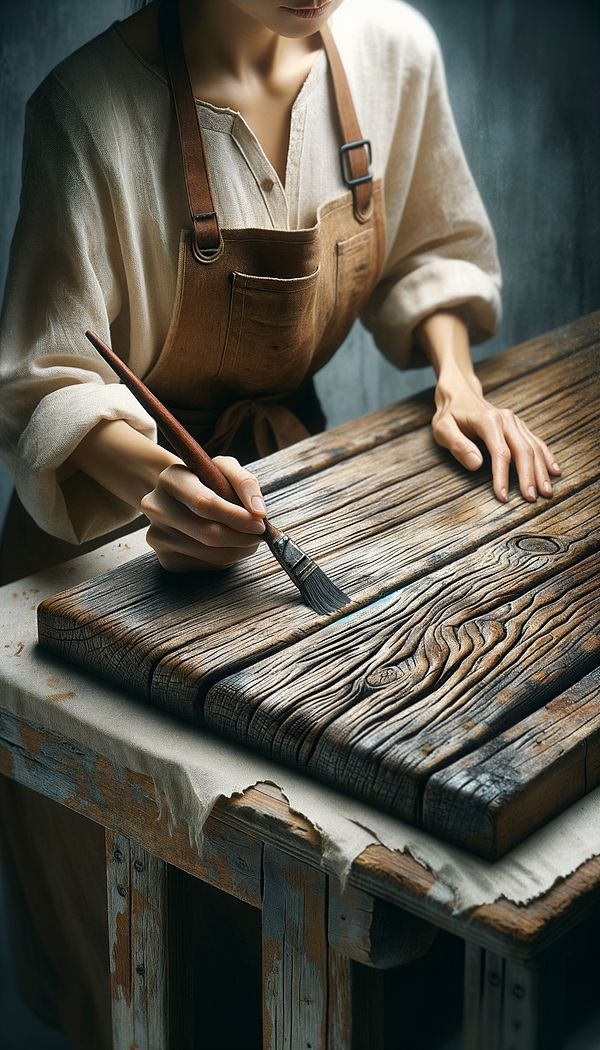What is Dry Brushing?
Dry brushing is a painting technique used to create a textured effect.
Description
Dry brushing is a decorative painting technique that adds texture and depth to a surface, giving it a distressed or subtly textured appearance. This technique involves lightly dragging a dry paintbrush over a surface so that only the bristle tips touch, allowing minimal paint to be applied. The result is a fine, scratchy layer of color that reveals some of the underpainting or the original surface beneath it.
This method is particularly popular in shabby chic, rustic, and farmhouse interior design styles, where a lived-in, weathered look is desired. Dry brushing can be used on a variety of surfaces, including wood, metal, and plaster, making it versatile for different types of furniture, wall treatments and finishes, and decorative objects. The choice of paint color and the amount of dry brushing applied can dramatically change the appearance of the item or surface and enhance its texture without overhauling its basic structure.
To perform dry brushing effectively, it’s important to use minimal paint on the brush and apply with gentle, consistent strokes. This ensures that the technique adds just the right touch of age or character to a piece without overdoing it. The versatility of dry brushing makes it a beloved technique for DIY enthusiasts and professional interior designers alike.
Usage
Dry brushing is commonly used on furniture pieces, such as tables and chairs, to create an aged or distressed look. It's also applied on walls and wall panels to add texture and depth to the room's aesthetic. Decorative items, like frames and ornaments, are frequently dry brushed to enhance their details and give them a unique appearance.
FAQs
-
Can dry brushing be used on all types of surfaces?
Dry brushing can be applied to a variety of surfaces, including wood, metal, and plaster. However, the technique and the type of paint used may vary depending on the material.
-
Is dry brushing suitable for every interior design style?
While dry brushing fits particularly well with rustic, shabby chic, and farmhouse styles due to its textured and weathered appearance, it can be adapted to suit other design styles as well by adjusting the color palette and application technique.
-
How do you prepare a surface for dry brushing?
The surface should be clean and dry. If you're working on a previously painted or finished surface, ensure it's smooth and free of any glossy topcoats, as this can affect the adhesion and appearance of the dry brushed layer.
-
What kind of paintbrush should be used for dry brushing?
A stiff-bristled, flat brush is ideal for dry brushing because it allows for better control and ensures that minimal paint is applied. The size of the brush depends on the size of the area being worked on.
-
Can dry brushing be combined with other painting techniques?
Absolutely, dry brushing can be combined with other painting techniques such as glazing, stenciling, and distressing to create intricate and multi-dimensional finishes.
-
How do you determine the amount of paint to use on the brush?
Dip just the tips of the bristles into the paint, then wipe off the excess on a paper towel or scrap piece of wood until the brush is nearly dry. This ensures a light, textured application without saturating the surface.
Practical Application
When planning to dry brush a piece of furniture or decorative item, choose a base color that will subtly peek through the top color for a layered effect. Practice the technique on a scrap piece of the same material to get a feel for the brush and paint, and to ensure the final texture and color intensity match your vision. Always start with a minimal amount of paint and build up the layers slowly for the best results.
-
Furniture Types599 articles
-
Decorative Techniques322 articles
-
Decorative Objects240 articles
-
Wall Treatments & Finishes157 articles
-
ConsultationA meeting or series of meetings between a client and a professional to discuss plans, preferences, and requirements for an interior design project.
-
Ribbon BandA decorative element used in various aspects of interior design.
-
Dutch RenaissanceA style of design and architecture that flourished in the Netherlands during the 16th and early 17th centuries.
-
eDesigneDesign is a remote interior design service facilitated through digital communication.
-
ChannelingChanneling is a distinctive decorative technique used in upholstery and furniture design.
